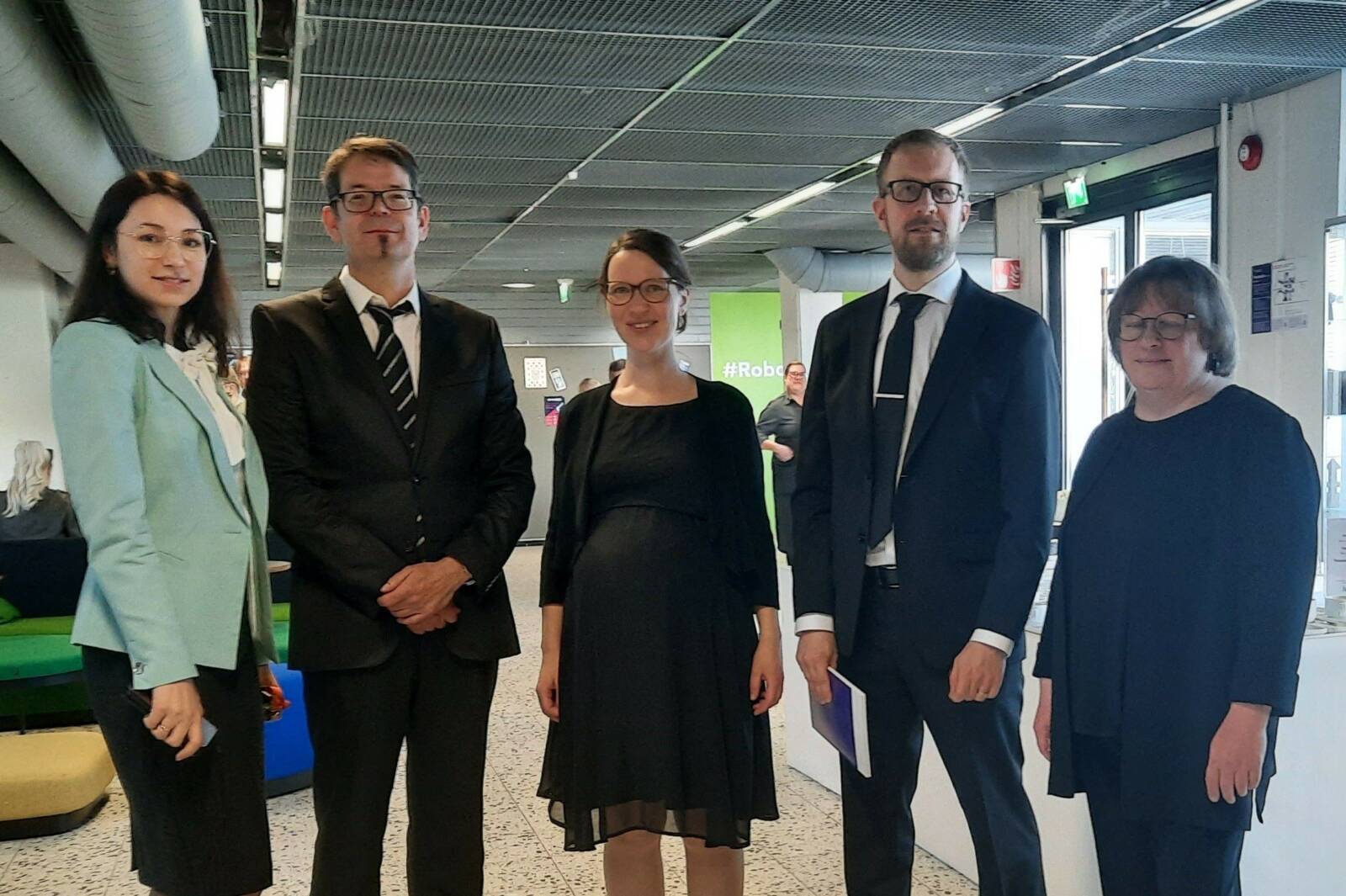Rautaniemi studied the crystallization of solid pharmaceutical preparations and nanoparticle-mediated drug delivery using two advanced fluorescence imaging methods.
In medical research, there is a constant search for more sensitive and gentle methods to study complex samples such as cells, tissues, and pharmaceutical preparations. Many widely used methods, such as confocal microscopy, are based on fluorescence intensity.
“Fluorescence methods based on intensity are sensitive to the local concentrations of fluorescent dyes and can suffer from many external factors of the sample, such as light scattering. Therefore, in my dissertation, I have used methods that also utilize another dimension, such as fluorescence lifetime,” explains Kaisa Rautaniemi.
In her dissertation, Rautaniemi studied solid pharmaceutical preparations and drug transport mediated by extracellular vesicles in cells using two advanced imaging methods: fluorescence lifetime imaging microscopy (FLIM) and nanoparticle video imaging. FLIM captures the fluorescence decay curve in each pixel of the microscope image, providing more information about the environment of the fluorescent substance than just intensity. In video imaging, the trajectories of individual particles are recorded with high temporal and spatial resolution, allowing for very precise analysis of particle movements.
“FLIM proved to be a sensitive method for detecting the early stages of crystallization of solid pharmaceutical preparations, which helps to better understand the mechanisms of crystallization and thus develop more stable pharmaceutical preparations,” notes Rautaniemi.
The methods provide new insights into the intracellular transport of drug carriers
Another research focus of the dissertation was extracellular vesicles, which are naturally produced nanoparticles in the body and have been extensively studied in recent years for their application in targeted drug delivery. By using drug carriers, drug delivery in the body can be targeted more precisely, thereby reducing the side effects of drugs.
“The key results of my dissertation relate to the methods: I show what kind of information about drug carriers can be obtained with the methods I used. Based on the FLIM results, the cancer drug paclitaxel bound to a different target when packaged in a drug carrier than without a drug carrier. Video imaging revealed that vesicles move inside the cell in a manner quite similar to synthetic nanoparticles. I also highlight factors that can affect the reliability of the results. For example, fluorescent labeling of vesicles is a critical step for the results, and in video imaging, sufficient resolution must be achieved to identify certain interactions,” summarizes Rautaniemi.
After graduating as an engineer from Tampere University of Technology, Rautaniemi began her doctoral studies in the Supramolecular Chemistry of Bio- and Nanomaterials group under the supervision of Associate Professor Elina Vuorimaa-Laukkanen and Professor Timo Laaksonen. In the fall of 2022, she moved to the Cell Imaging and Cytometry unit at the Turku Bioscience Centre and continues to work extensively with microscopy there.

